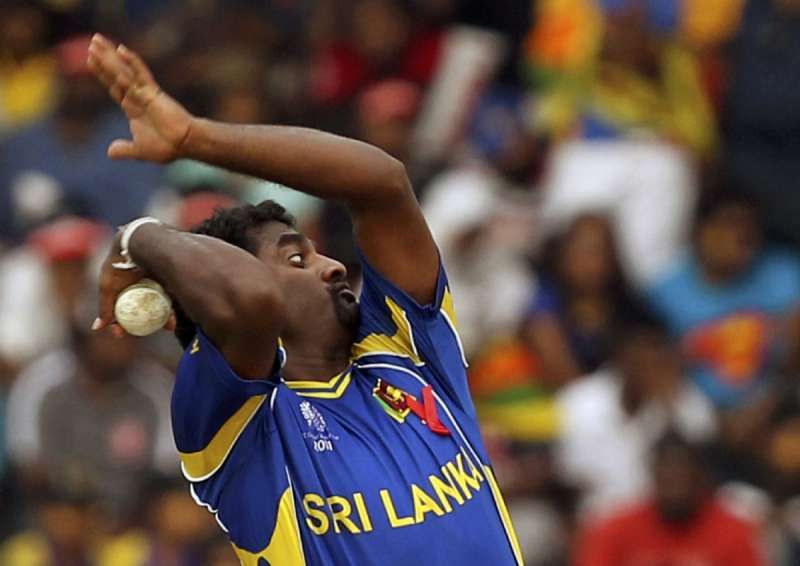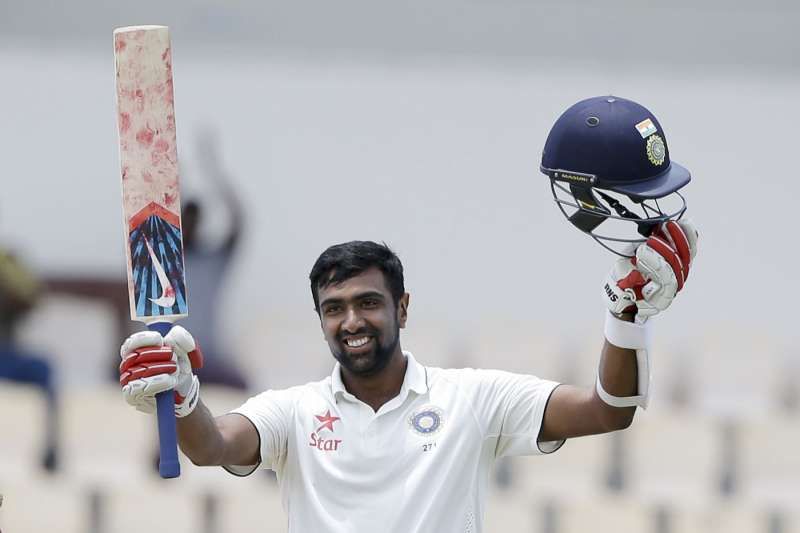
Why comparing Ravichandran Ashwin to Muttiah Muralitharan is not so baseless anymore
The fortunes of the young Indian Test team are on the upsurge and what seemed like overambitious, wild comparisons only a couple of years ago, no longer seem so uncalled for. Be it comparing Kohli to Tendulkar, or Rahane to Dravid, the fact is that some of the young crop of Indian cricket have done enough to at least merit a comparison with the greats of the game.
Also Read: Ravichandran Ashwin was phenomenal, Kohli was aggresive, says Dav Whatmore
With Ashwin recently bagging the top spot in the ICC Test bowlers ranking, he has cemented his place as one of the most lethal bowlers in the longer format. His contemporaries are either too old (eg Herath) or too inexperienced (eg Jadeja, Yasir, Shakib) to be giving him stiff competition for a sustained period. He has proved himself a matchwinner at the highest level, but will he stand up to a comparison with the greatest spin bowler in cricket history?
As Test bowlers
Among current spin bowlers in Test cricket, only Rangana Herath has a higher wickets tally than Ashwin. Such has been the phenomenal rise of Ashwin in Test cricket, that in just 39 matches, he is the second highest wicket-taker among spinners currently playing.
His habit of picking up wickets by the bucketload prompted commentator Harsha Bhogle to tweet that Ashwin has a wicket producing machine doing double shifts in his backyard. He has established himself as India’s go-to man and with a long home season ahead, it is likely that he will emerge from it with a much-enhanced reputation.
| Player | Matches | Innings | Wickets | Ave | Eco | SR | 5WI | 10WM |
| Muralitharan | 133 | 230 | 800 | 22.72 | 2.47 | 55.0 | 67 | 22 |
| Ashwin | 39 | 72 | 220 | 24.29 | 2.94 | 49.4 | 21 | 6 |
While the magnitude of Muralitharan’s numbers are astounding, to say the least, it is widely acknowledged that spinners mature in their 30s, by when they have acquired complete mastery over their craft.
With Ashwin just having turned 30, his best years are ahead of him and a comparison with Murali`s figures at a similar point in his career might throw more light on their respective progress in their careers.
At the end of 1999, Murali had played 74 test innings, with 17 five wicket hauls and 2 ten wicket hauls, tallying 227 wickets. Sounds strikingly similar, except that Murali had played 49 tests by then, for those 74 innings. He also had a strike rate much lower than Ashwin’s 49.4 at that point. Murali took 85 innings to reach 21 five-wicket hauls (Ashwin took 74). While these stats might show Ashwin in favourable light, it also shows how well Murali bowled from that point on in his career to reach the peaks that he did.
Murali’s better average and economy can be attributed to the fact that he played mostly in the era before T20. However, Ashwin’s strike rate is far ahead, with a wicket almost every 8 overs, compared to Murali striking almost every 9 overs.
Another interesting difference is that Murali bowled a lot more than Ashwin did. While Ashwin has bowled an average of around 25 overs every innings, Murali bowled an amazing 32 overs on average every time he took the field.
In shorter formats
There will never be a fair comparison in the T20I careers of Ashwin and Murali because the latter played only 13. However, comparing their ODI figures throws up interesting facts.
While Murali is generously feted for his astounding 800 Test victims, one might forget that he was also the highest wicket-taker in ODIs with 534 victims, far ahead of the crowd. Only Wasim Akram has more than 500 wickets in ODIs and only four bowlers have ever taken more than 400 wickets.
| Player | Matches | Innings | Wickets | Ave | Eco | SR | 4WI | 5WI |
| Muralitharan | 350 | 341 | 534 | 23.08 | 3.93 | 35.2 | 15 | 10 |
| Ashwin | 102 | 101 | 142 | 31.73 | 4.85 | 39.2 | 1 | 0 |
This is where the class of Murali shows and Ashwin falls behind. While a lesser average and economy is excusable in today`s times, Ashwin suffers in his strike rate. In a format where bowlers are allowed a limited number of overs, a higher strike rate is paramount.
Chaminda Vaas ended up with a strike rate (39.9) similar to that of Ashwin’s, but despite playing nearly the same number of matches as Muralitharan, he ended up with only 400 wickets (which is no mean feat itself).
Also Read: Ravichandran Ashwin showed his class and deserved to be man of the series, says Kane Williamson
At a similar stage in Murali`s career, when he had played 101 matches (99 innings), he had 139 wickets, 3 four wickets hauls and 2 five wicket hauls. However, just like in Test cricket, Murali hit his purple patch between 2000 and 2008, where he picked up the bulk of his wickets. During the said period, he picked 313 wickets from only 184 innings (average of 19.92 and strike rate of 32.5).
ODIs – Home Vs Away
Another major difference in their ODI careers is that Murali was a much better bowler away from home than Ashwin has been. While Murali managed very good figures in every country he visited, Ashwin’s figures outside of India, Bangladesh and England, are quite pedestrian, to say the least. Murali’s strike rate improved to 34 when playing away from home, whereas Ashwin`s reduces to 41.98 outside India.
In Ashwin’s defence, he has terrible figures in South Africa (Ave: 169, SR: 168) and New Zealand (Ave: 85, SR: 96) having played only 10 matches there, picking up 5 wickets. These outliers have ruined his bowling figures away from home. However, Ashwin has not really proved himself on tracks that do not assist spinners like the ones outside the subcontinent. His figures in Sri Lanka and the West Indies are quite poor too.
Also Read: Stats don't lie: R Ashwin is a better Test bowler than Harbhajan Singh
Ashwin performed admirably in the Champions Trophy in England apart from the 2011 and 2014 tours, which is why his figures in that country are better than those in India. Having said that, Ashwin has just not made the kind of impact in ODIs that Murali did.
Despite having played over 100 matches, Ashwin has no five-wicket hauls and only one four-wicket haul. Catching up with Murali, especially in those departments, seems like a distant dream.
The more valuable player?
Ashwin almost holds his own against Murali when it comes to Test cricket, proving it to be a worthy comparison. The story in ODIs is quite different, though. It is quite a testament to the skill, longevity, and persistence of Murali, that even in today’s times of slam-bang cricket, he has an enviable and legendary record in 50 over cricket. It is quite unlikely that anyone, let alone Ashwin, will ever come close to the kind of figures that he has achieved.
One fact that might tilt the scales in Ashwin’s favour is his batting, and with him being on top of the ICC Test rankings for all-rounders for a while now, he definitely brings more to the table. With 4 centuries and an average of 33.55, Ashwin makes a useful lower order batsman who has bailed the team out of sticky situations in the past. Sometimes, his knocks have been the difference between a victory and a draw or a defeat.
Given his all-round skill and his batting exploits, Ashwin is as good a Test cricket package as Murali, if not better. Any captain having to choose between the two would be in a quandary, to say the least.
Coming to ODIs, Ashwin’s measly batting average 16.45 does him no favours. Murali might have done remarkably worse at 6.80, but even then, choosing between the two is a no-brainer. Murali’s vastly superior bowling performances make quite a difference, proving once again that he was a true legend of the game, and perhaps the greatest spin bowler to have ever played the game.
In conclusion, whether Ashwin is able to scale the lofty heights achieved by Murali or not is a question that only time will answer. At this point in time, he looks to be the only current player even worthy of such a comparison (which is a great accomplishment). If he continues to perform, comparisons between them will surely gain more currency with each passing season.


